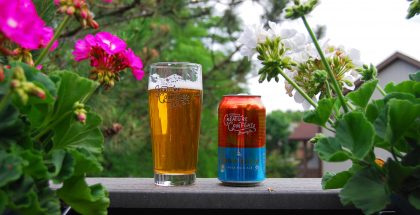Homebrew: Developing Your Recipe
While following clone recipes and recipes produced by others is a great way to get started and master your specific equipment, developing your own recipes is where the beauty of brewing really begins. The process of creating a beautiful masterpiece and sharing something that is solely your own with friends and family is incredibly exciting. Other than ‘saving money’ which, lets be honest is not true at all, we want to make something that we’re proud to call our own. That is the joy of homebrewing. This weekend I will be brewing an IPA and want to share my methodology in hopes that it will help in developing your recipe.
Brew something that you want to drink. This seems pretty obvious, but why would you brew anything else? When push comes to shove, you’re most likely going to be drinking a lot of your beer. Pick a style that you like to drink. While I like a lot of styles, I recently found some of my favorite high alpha acid hop varieties, so I decided to take one step further in developing my perfect IPA recipe.
I recommend starting by finding a beer or liquor store in your neighborhood that sells mix and match six packs. Find a few beers of the style that you’re going to brew that you have had before and enjoy or are ‘famous’ examples of the style. Since I’m brewing an IPA, I went to my local bottle shop and got Firestone Walker Union Jack, Odell’s IPA, Deschutes Inversion IPA, Stone IPA, Lagunita’s IPA and Great Divide Titan. I poured myself a small sampler of the first beer, got my trusty notebook out and my favorite pen. I like to compare multiple beers of the same style to one another so that I can really pick out the nuances that I like the best. Here were my findings for a few of the beers:
Odell’s IPA: Strong grassy aromas supported by cirtrusy grapefruit and slight resin and grassy notes. The flavor is mostly grassy and resiny with some bready and malty flavors towards the finish that remind me of a German Bock beer but are very slight. Overall the beer is well hopped with a nice malt backbone. Scales tip towards hops. Medium golden color with great head retention.
Deschutes Inversion IPA: Big floral aroma that remind me of jasmine tea leaves. The flavor was very malt forward, big toasted cracker flavors and a significant amount of caramel sweetness. Some citrusy and grassy notes present themselves close to the finish. Overall impression, more maltiness than I want in an IPA, I would almost consider this a west-coast style red ale. The appearance was also much darker than the other two beers. Almost amber in color.
Firestone Walker Union Jack: Big grapefruit and stonefruit aromas. Citrusy peach and apricot aromans are very inviting. The flavor of the beer is mostly citrus grapefruit and a distinct grassy character. Overall impression is a well balanced, slightly hop favoring. Lightest in color of the three beers sampled with very high clarity.
When comparing the three together, they all had their ups and downs, but what I was envisioning for my beer was something closest to the Firestone Walker beer. A quick visit to their website and my IPA book by Mitch Steele yielded great results. The firestone walker beer is 7.5% ABV, 70 IBUs and 8 SRM. Malts include 2-row, munich, cara-pils and light crystal. Looking up descriptions of the other recipes, Odell’s uses vienna malt, which I detected as the Bock-flavor. I liked the other malt profiles better so am going to stick more closely to the malts used in Union Jack. Deschutes IPA was more malty that I desired and want to avoid that in the beer that I create. My IPA book also says that there is ~10% caramel malts and another ~7% crystal malts, in Deschutes’ recipe which confirms my flavor perceptions. I think that of the three, the hop flavor of Odell’s was my favorite and the hop aroma was most enjoyable in the Union Jack.
So here we go. Based on the malts that I want to use and the desired color of 8-9 SRM, my malt bill is approximately as follows: 85% 2-row pale malt, 6% munich malt, 5% cara-pils and 3% crystal 40L. A small touch of UK chocolate malt will be added to boost the color to my desired range. Targeting 7% ABV, I need about 30 pounds in my grist bill to get the target gravity.
Hops wise, I already have Simcoe and Citra which are two of my favorite varieties. I like to use high alpha hops with nice flavor and aroma characteristics as first wort hops. The second addition will be a flavor addition at 30 minutes which will likely consist of more Citra and Simcoe plus another citrusy type if I need to boost the IBUs. I suspect there was a big dose of Cascade in the Odell IPA that I really enjoyed so this maybe my other flavor addition. The late kettle additions will definitely feature more Simcoe and Cirta varieties with maybe some Amarillo, Galaxy or other citrus-forward hop varieties. I would like to target a calculated IBU range in the 80-90 range. While this is very high per BJCP style guidelines, the Inversion IPA is listed at 80 IBU and still wasn’t overly bitter, not to mention the utilization of the hops will not be as efficient as calculated.
That is the starting spot for my recipe. Going to my local homebrew store for ingredients will be the final decision factor as to the other hop varieties that I choose to use. Happy brewing this weekend!







Submit a Comment